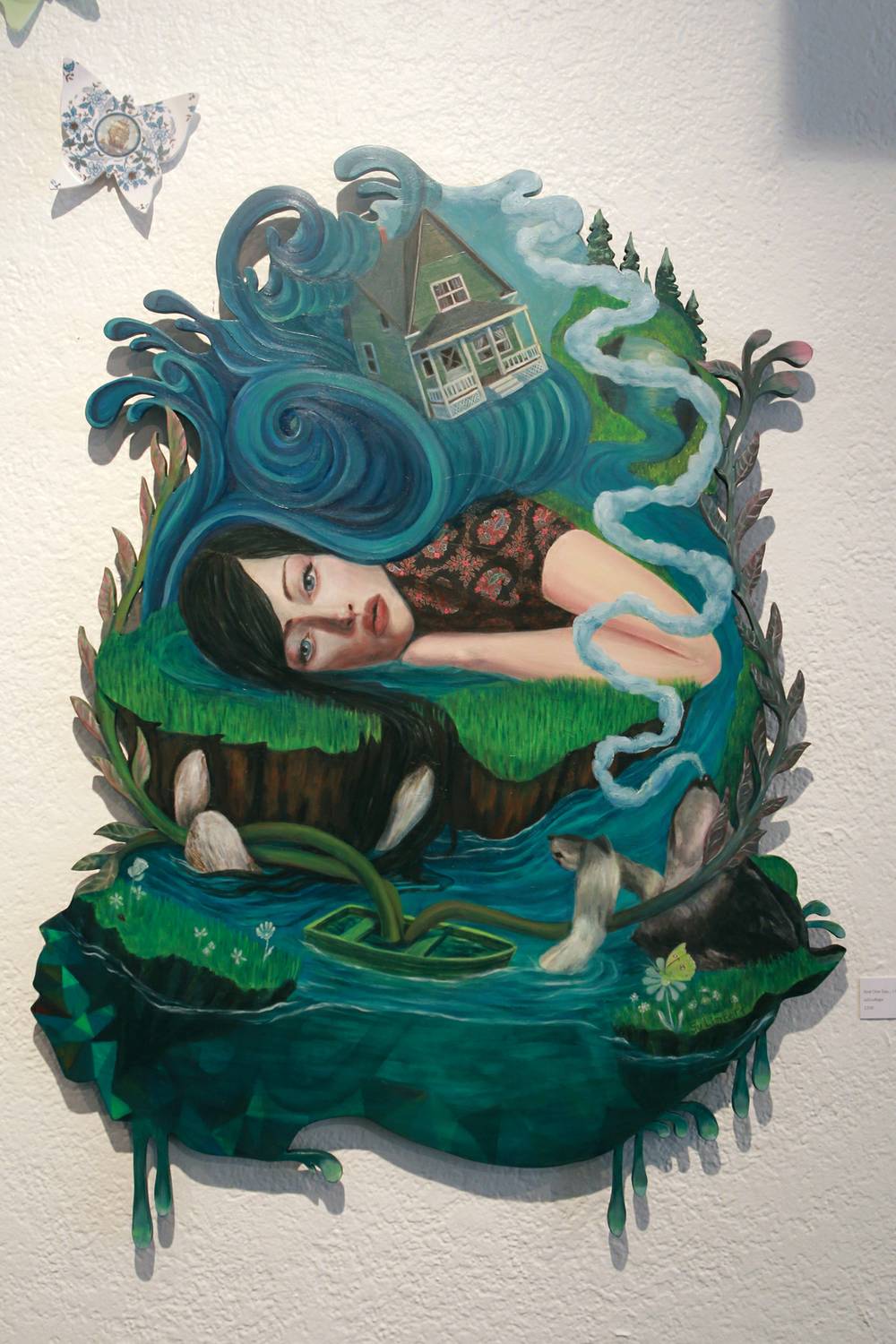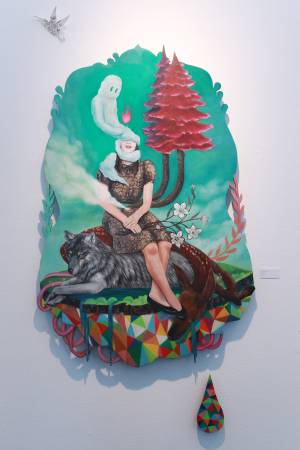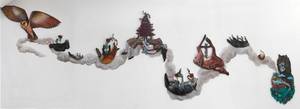
ForevermoreThrough August 29; Wednesday & Friday, 11 a.m.-5 p.m.; Thursday, 11 a.m.-8 p.m.; Saturday, 11 a.m.-3 p.m. Trifecta Gallery, 702-366-7001.
Long ago, in faraway times, painting told stories—way back before the printing press was invented and literacy became common. But in the visually saturated 2K millennium, how can painting tell stories? Is it even possible? Contemporary painting usually gives us a feeling, an idea, maybe even a glimpse into a world, but rarely, if ever, a narrative. Stories reside in our books, our films, our performances, but not in 2D visual art.
Which is why Su Limbert’s Forevermore exhibition at Trifecta Gallery is unusual. The 27 representational oil paintings and six sculptures seem to articulate a single, mythic narrative in which creatures die and resurrect while “cloud beasts” and “bewilderbeasts” officiate. A striking, dark-eyed, dark-haired woman wearing a vintage print dress bears witness to the metaphysical phenomena in her midst, often in the company of a handsome wolf.
Limbert’s paintings eschew canvas and frames—or even a rectangular ground. She paints directly on wood shaped with jig and scroll saws. Sometimes figures are cut out on contour lines; sometimes they’re painted on medallions, accompanied by botanical, smoke or umbilical trim. The surface is flat, more matte than shiny, and lightly glazed. Although multiple cut-outs are sometimes laid one on top of the other, almost like pop-up books, the works owe more to 2D than 3D construction.
Ornamentally shaped paintings suit Limbert’s florid, narrative content, in which symbols convey importance based on size and location in the composition. In “Blind Optimism,” for example, a paisley-clad female sits contentedly, half on a dead doe and half on a gray wolf, while two pine trees sprout from her belly and a Casper-like “cloud beast” wraps around her throat. Similarly, in “And One Day... I Will Grow Wings,” a supine female figure by the side of a riverbank is enveloped in smoke oozing from the half-submerged wolf’s nose while a Wizard-of-Oz-ish house rides the waves overhead.
Despite odd juxtapositions, the imagery in Forevermore summons fairy tales more than Surrealism. A fairy tale narrative—no matter how fantastic—makes sense according to the rules of the world where it takes place. Surrealism, on the other hand, opens up to the endless possibilities of competing narratives. Limbert’s art tells a coherent story, perhaps most clearly illustrated by the gallery wall pleasantly arrayed with a herd of resurrecting creatures. We will be saved, it tells us. We will transform.
Overall, Forevermore engages the theme of death without becoming creepy. The works—which owe more to the traditions of craft and illustration than to the momentum of contemporary art—show considerable skill. The promise in the art is to move beyond the world of over-arching narrative and into more unpredictable terrain. In the Rubik’s Cube-like device appearing in nearly all of Limbert’s works, mystery resides.








